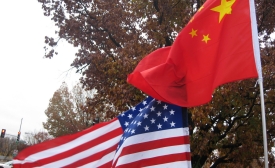asia-pacific
As he nears the end of his presidency, Barack Obama continues to enjoy a broad degree of international popularity. A new Pew Research Center survey conducted in 10 European nations, four major Asia-Pacific countries, Canada and the United States finds that half or more of those polled in 15 of 16 countries express confidence in the American leader.

Dr. Jerrold D. Green, will participate in the China-US Public Diplomacy Summit on June 19, 2016 in Beijing.
The outcome of apology diplomacy between the countries never satisfies any of the parties. Despite some heartfelt apologies from the Japanese government, neither Beijing nor Seoul has been satisfied. Words that have been used in textbooks, visits by Japanese prime ministers to the Yasukuni Shrine, movies and fiction about World War II have all became divisive issues in one of the economic engines of the world.
America’s pivot to Asia has been discussed widely since the strategy was unveiled in President Obama’s speech to the Australian Parliament in 2011. Although many other global strategic issues needed to be addressed since then, it is interesting to revisit the rebalancing because Obama’s rhetoric can be used as a prism through which his idea of America’s priorities will become clear.
Between complacency and confrontation there is a responsible way forward that keeps the Asia-Pacific a big enough place to accommodate the vital interests of both Beijing and Washington. The heavy lifting will have to be done by the United States. That’s okay. The work will make America a stronger nation and a better Asian ally.
China's new leadership has been following a new pattern of diplomacy that features increasing softer elements and a down-to-earth manner. President Xi Jinping's just-concluded trip to Australia serves as a good example. During the state visit, the two Asia-Pacific giants lifted their relationship to a comprehensive strategic partnership and concluded their nine-year-long bilateral free trade talks.
What does the Australia Network’s closure and the launch of Sky News’ Australia Channel mean for Australian soft power? Since their inception, Australia’s international media organisations have trodden a fine line between promoting Australia’s interests in the Asia Pacific region and upholding the values of the Fourth Estate which sees critical reporting of government as central to its role.
In East Asia a new kind of big country-small country relationship is taking shape. There are two big countries involved in this situation: a rising China and the long-established power that is the United States. These two big countries need to find a way of accommodating each other’s aspirations and managing current tensions or there could be a disruption of the existing relative peace in the region.







